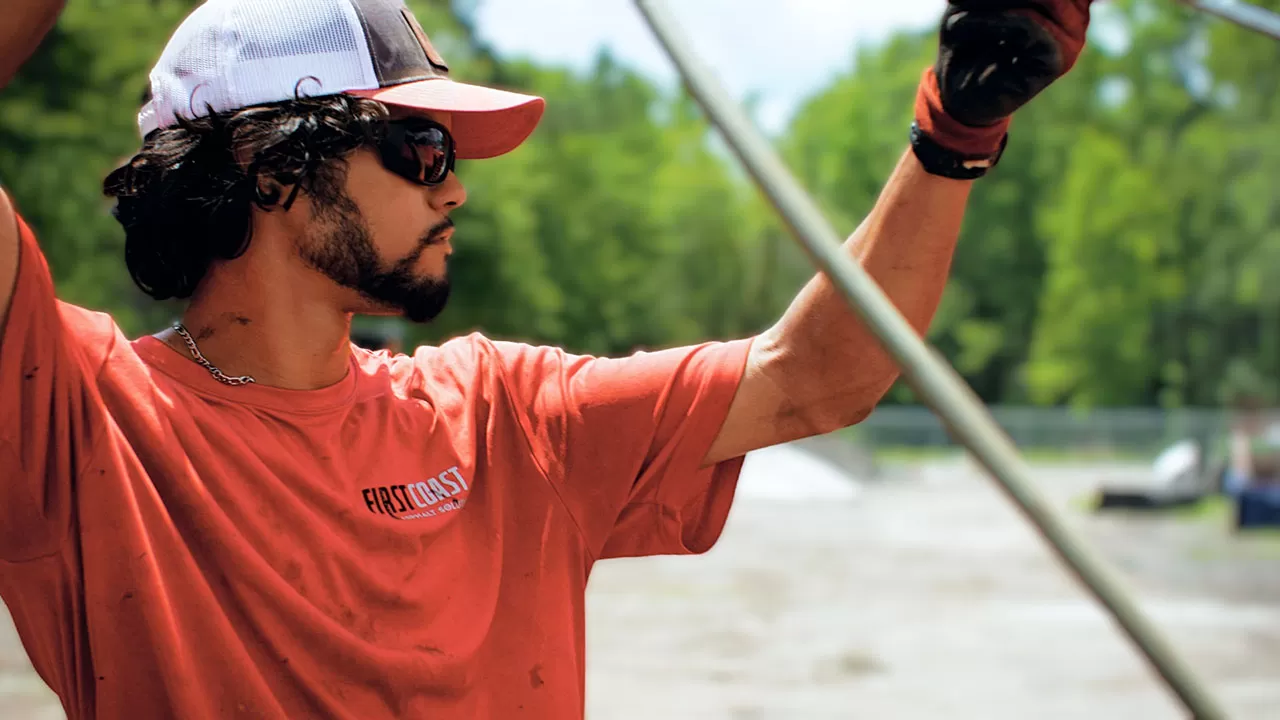
6 Types of Asphalt Cracks & How They’re Repaired
Here are 6 common types of asphalt cracks and the best repair methods for each.
Asphalt surfaces, whether in parking lots or driveways, are prone to developing cracks over time due to various factors like weather, traffic, and underlying structural issues. Understanding the different types of asphalt cracks and how to repair them can help maintain the integrity and longevity of your pavement. Fortunately, our Greater Jacksonville, FL, asphalt paving contractor is here to help keep you informed so you know what to look for and when to seek out professional assistance.
1. Alligator Cracking
Also known as fatigue, crocodile, or web cracking, this form of pavement distress gets its name from the pattern that occurs when the cracks meet. Alligator cracking can be seen everywhere from commercial asphalt parking lots to residential properties and often happens because of long-term wear, poor initial asphalt installation, a thin surface or base, and improper drainage.
Unfortunately for many businesses or homeowners, cracks of this nature can worsen rapidly and turn into potholes if not treated in a timely manner. However, this doesn’t mean that repairs don’t exist. Our approach to asphalt crack repair for this distress type would be to remove any affected segments of pavement down to the base, install a new sub-base, and lay new asphalt.
2. Block Cracking
Caused by a variety of factors like traffic loads, temperature changes, moisture, a lack of sealcoating, and aging of the asphalt binder, block cracking is characterized by the formation of interconnected cracks that resemble blocks or squares on the pavement surface. Not only does block cracking compromise the appearance of the pavement but it also reduces its durability and load-bearing capacity. In turn, this means repair and maintenance are needed to prevent further deterioration and ensure the asphalt’s longevity.
Our asphalt paving contractors will first assess the extent of the damage visually and with specialized equipment. Then, we’ll clean the affected area to remove debris and vegetation before filling the cracks with a hot rubberized crack sealant to prevent moisture intrusion and other damage. Block cracking may look extremely bad but for the most part, the repair tends to be simpler and doesn’t typically warrant total replacement.
3. Edge Cracking
Edge cracking in asphalt refers to the formation of longitudinal cracks along the edges of pavement. Inadequate support, poor drainage, temperature fluctuations, and traffic loads can all result in edge cracking and naturally, a headache for property owners. Repair is possible, however, and our team has years of experience in patching cracks of this type.
We’ll start by assessing any underlying causes, potentially addressing drainage issues or base support. Cleaning the area will come next, followed by a cut along the crack for a clean edge. Deteriorated asphalt and base material are removed before being replaced with fresh mix or specialized crack filler. Sometimes, we find that installing edge restraints or curbing is necessary for added support. Compaction ensures proper bonding, and sealcoating the entire surface further protects it.
4. Reflection/Reflective Cracking
If you’ve got a problem underneath the top surface of your asphalt, like a bad joint or seam, you may notice cracking on the upper wear layer known as reflection cracking. In other words, cracks from the underlying pavement reflect through a new overlay or surface. To repair this, a professional asphalt repair company employs several steps.
After we’ve assessed the extent of the reflection cracking, we’ll clean the affected area to remove debris and vegetation. Then, we will use techniques like crack sealing or routing to address the cracks in the existing pavement before applying a bond coat or tack coat to improve adhesion between the old and new layers. Finally, we’ll overlay the cracked area with a new layer of asphalt for a smooth and durable surface.
5. Longitudinal Cracking
Longitudinal cracks run parallel to the direction of traffic flow or the pavement centerline. This cracking typically results from factors such as poor pavement design, inadequate base support, and long-term temperature fluctuations. If they’re on the minor side, repairing longitudinal cracks involves the application of crack sealer or filler to prevent moisture intrusion. It’s when the cracks are more severe that a portion of the pavement layer will need to be removed and replaced with an overlay.
6. Slippage Cracking
Slippage cracking occurs when the top layer of pavement slides or slips over the underlying layer, creating crescent-shaped cracks with a rough texture. This type of cracking often results from poor bonding between asphalt layers, inadequate compaction, or excessive moisture during construction.
To repair slippage cracking, our team will completely remove the affected pavement section and clean the area to ensure proper adhesion. This is necessary as patching a bad bond isn’t easy. Next, we’ll apply a tack coat to promote bonding between the existing and new asphalt layers. Lastly, we’ll overlay the repaired area with fresh asphalt mix and compact it thoroughly to ensure it’s nice and smooth.
Give Us a Call Today
Though they may look intimidating if they’re of a certain size, cracks in your parking lot, driveway, or sidewalk can be fixed. For the best, most cost-efficient results, our asphalt crack repair contractor serving Callahan, Jacksonville, and surrounding areas does recommend having the cracks handled sooner rather than later. Call First Coast Asphalt Solutions today at (904) 721-6300 or contact us online to request a quote.
